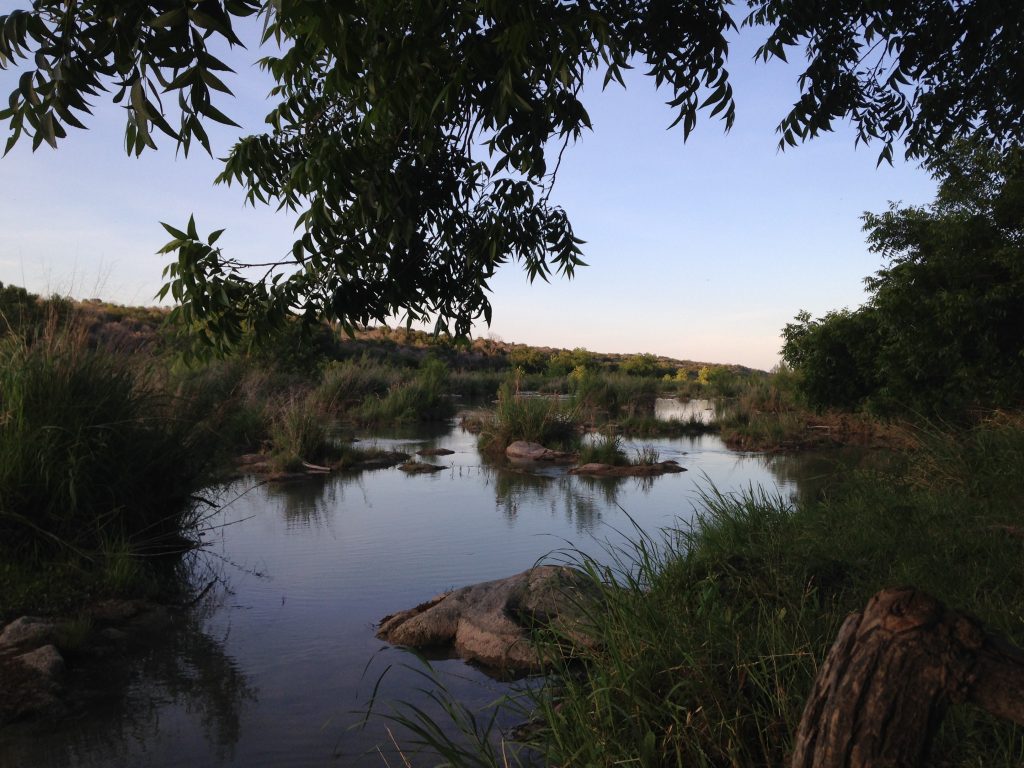
On the Llano River: the picnic spot kayak rock May 16, 2014. As of this date, only five inches of rain had fallen on the ranch in all of 2014. Photo by Monika Maeckle
Everything I need to know about climate change I can learn from the the picnic spot kayak rock on our Llano River ranch pictured above.
The rock is our family’s “riverometer.” It tells us how the river is faring. Is it up? Down? Is the current running swiftly or creeping slow?
Each visit to the ranch begins with a trek down to the picnic spot to check the kayak rock, where we put our kayaks in the water, launch our river adventures, begin our wading outings and fishing fun. When the river is down, which it has been in recent years, we can even traverse almost the entire karst riddled river bottom without getting our shorts wet. That’s a sad day.
Last weekend, like many of you, I was very much looking forward to a three-day Memorial Day weekend. As is our custom, my family set out for the Texas Hill Country. Memorial Day weekend generally means the kick-off of summer with clusters of agarita berries, excellent bird and butterfly watching, fishing for bass and gar, and the first swim of the season.
But not this year. Just like other creatures that have had their schedules rearranged by “extreme weather events” the outing we had planned didn’t happen. We had to literally go with the flow–of the river, that is.
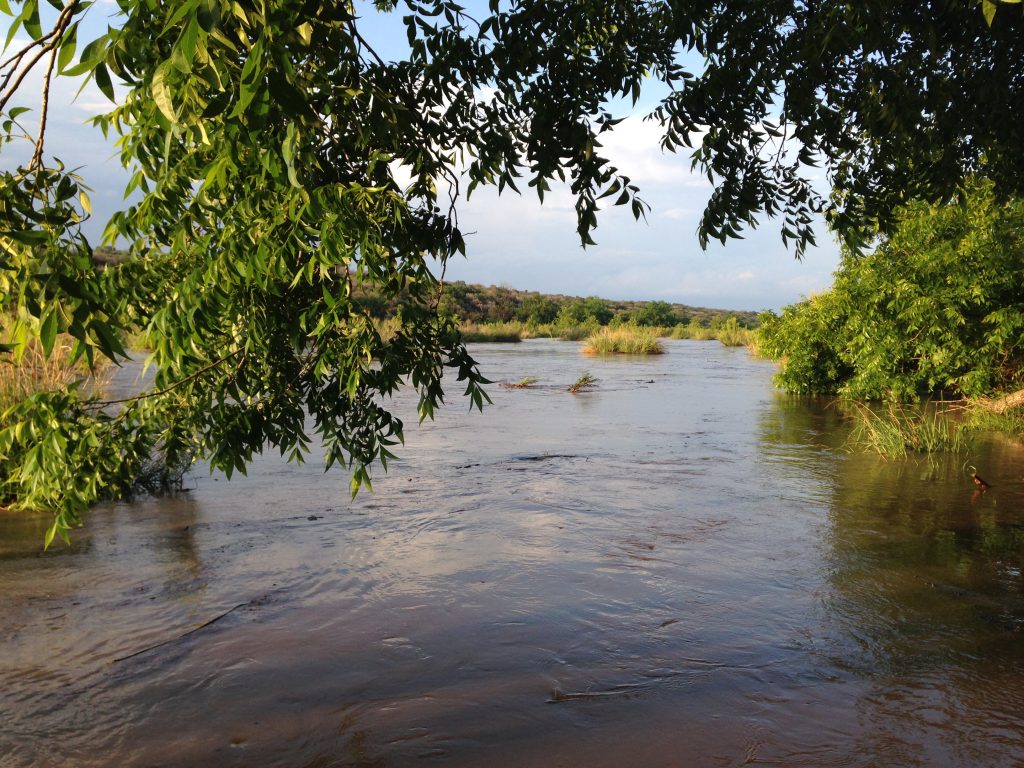
Llano River picnic spot kayak rock May 23, 7:38 PM, after five inches of rain in 60 minutes. And more on the way. Photo by Monika Maeckle
En route to our weekend late Friday afternoon, we encountered a massive storm that dumped five inches of rain on the Texas Hill Country in 60 minutes. That’s more rain than our ranch has seen in all of 2014 until now.
Living in San Antonio’s “flash flood alley,” which sits on thin soils and lots of limestone, we’re accustomed to rainstorms turning our streets into high water crossings. But this rain event was monumental.
Water blocked Highway 385 around 6 PM on Friday night, and surrounding fields looked like fresh tanks with water standing under oak and pine trees. And then the sun came out.
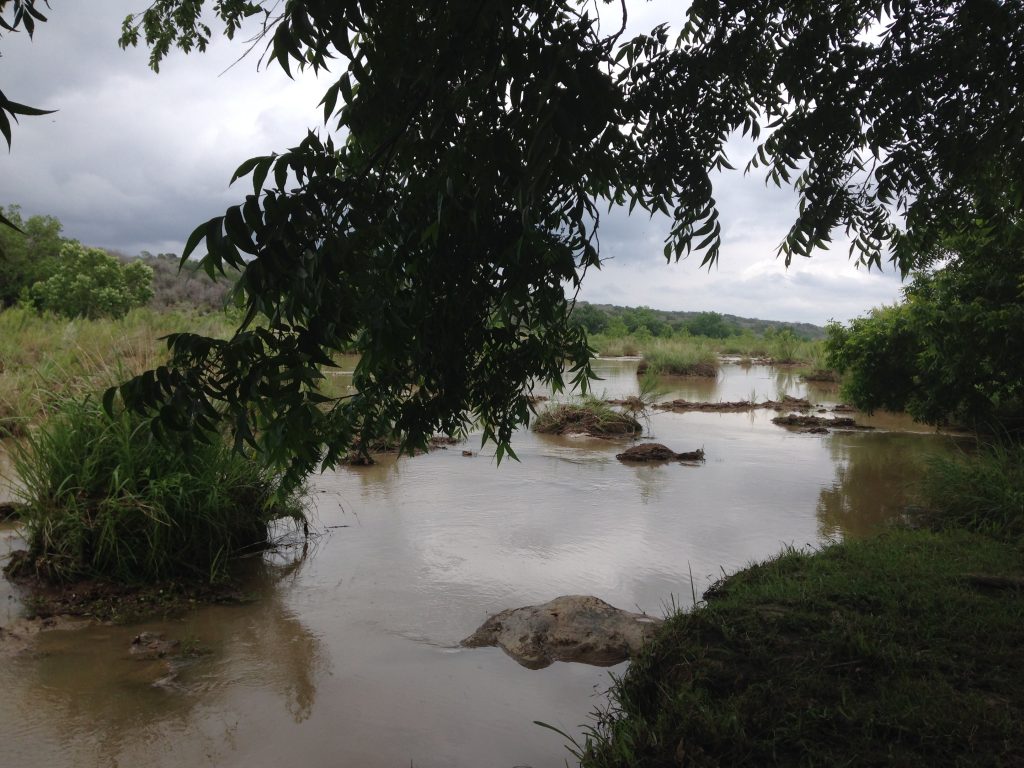
Llano River picnic spot kayak rock on May 24, 2:43 PM, water has receded a bit. Photo by Monika Maeckle
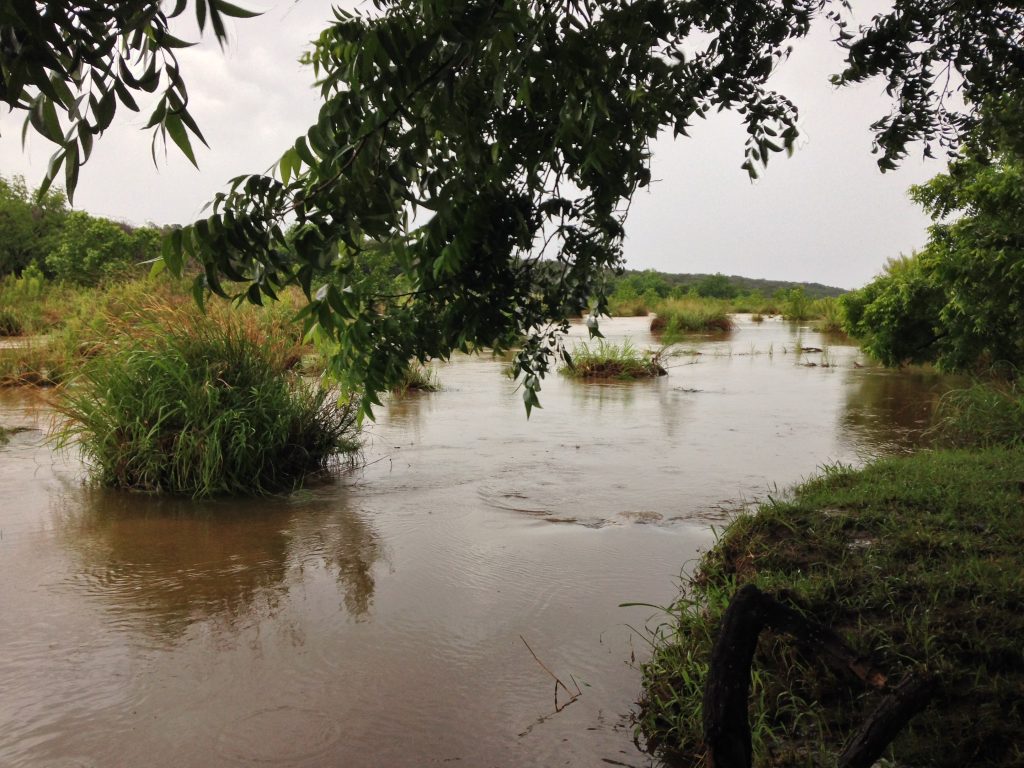
Llano River picnic spot kayak rock, May 26, 9:56 AM, after two-and-a-half more inches of rain, for a total of nine-and-a-half inches. Photo by Monika Maeckle
The rain surge continued on and off all weekend–then into the week. By Monday morning, we had 9.5 inches of rain in the rain gauge. That’s a blessing, of course, in the context of historic drought. But it sure would be preferable if we could have it in smaller, more manageable doses.
Unfortunately, that’s not likely. The predictable, manageable cycles of the past have been thrown into jeopardy with global climate change. As laid out in the recently released White House Global Climate Assessment Report earlier this month, “extreme weather events” like that of last weekend will become increasingly common.
Imagine you are an insect or crawfish that lives on or near the picnic spot kayak rock. One minute you’d be scrounging for sustenance in high salinity water with low oxygen levels, the next scrambling to survive as waves of run-off and debris literally rearrange your world. You’d really have to be flexible and have the ability to adapt to extremes to survive.
As written here previously, unpredictable and extreme weather will constitute the new normal for us. The third National Climate Assessment report suggests Texas will continue to face severe shortages of ground and surface water. Floods caused by extreme rain events will interrupt the ongoing drought. Tornadoes, thunderstorms, hurricanes, and winter storms will become more common. And wildfires will punctuate our summers.
Science tells us this is a period of rapid climate change like no other. Organisms that can adapt, will survive, and with luck, thrive.
As we assessed the damage to our roads following last weekend’s deluge, it’s clear some expensive road work is in our future. We’ll adapt. And, we’ll keep in mind that while we can always rebuild the road, only Nature can restore the river.
Like what you’re reading? Follow butterfly and native plant news at the Texas Butterfly Ranch. Sign up for email delivery, like us on Facebook, or follow us on Twitter, @monikam.
Related posts:
- Resilience Required: Climate Change Terns up the Heat in the Butterfly Garden
- Milkweed Shortage Sparks “Alternative Fuels” for Monarch Butterflies
- Texas Butterfly Ranch Milkweed Guide
- Will the Monarch Migration Become Extinct?
- How to Get Native Milkweed Seeds to Germinate
- Persnickety Texas milkweeds, May Not Lend Themselves to Mass Production
- Tropical Milkweed: To Plant it or Not is No Simple Question
- Desperately seeking Milkweed: Be sure to buy pesticide free plants
- Butterfly FAQ: Is it OK to Move a Chrysalis? Yes, and here’s how to do it
- How to Make Seedballs
- Converting your Lawn to a Butterfly Garden

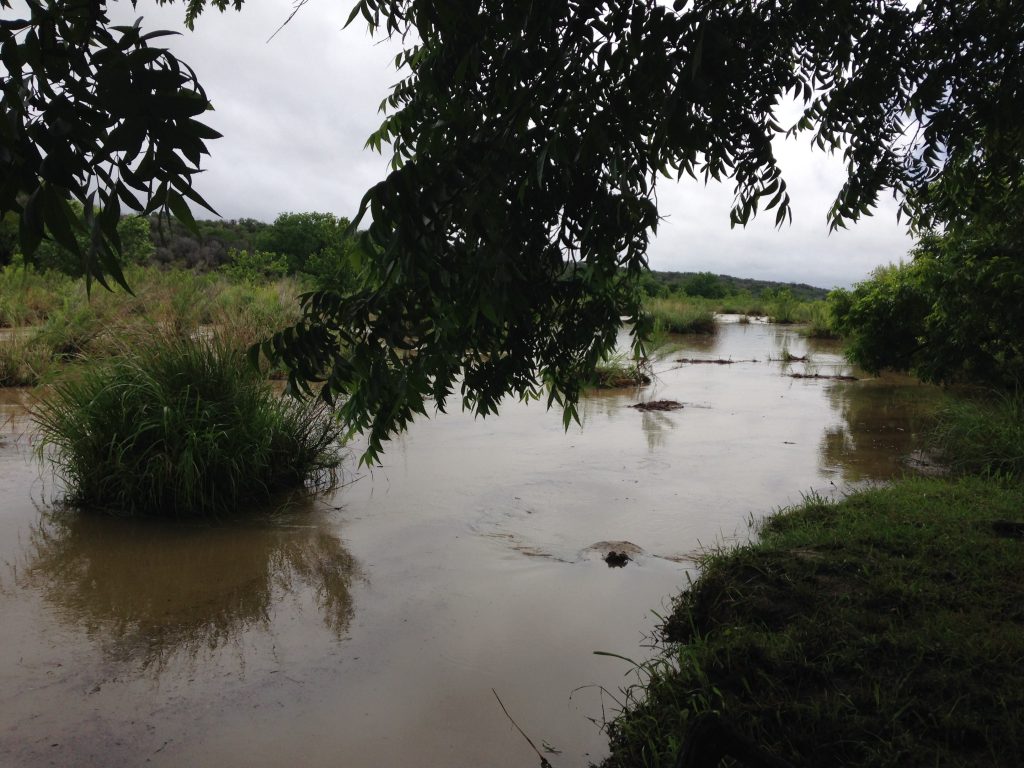
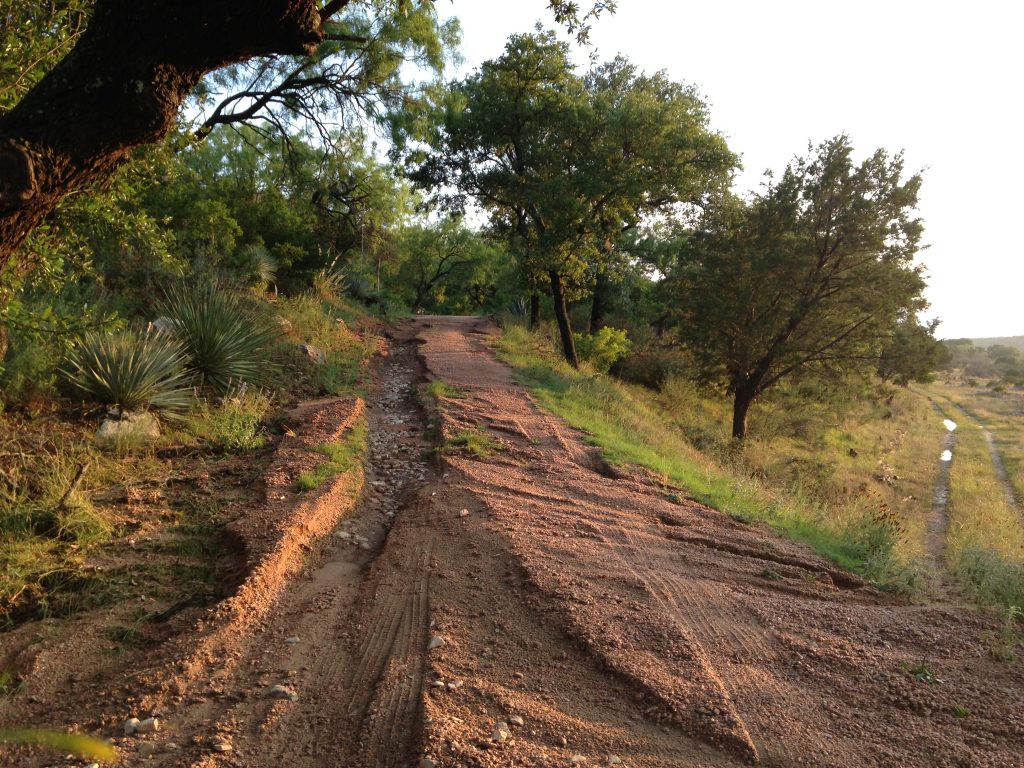
Leave A Comment